- Home
- David S. Jacobs
24 Declassified: 10 - Head Shot Page 8
24 Declassified: 10 - Head Shot Read online
Page 8
Jack had a hollow feeling in the pit of his stomach. He forced himself to adopt a conversational tone. “That was a catering truck. Must be coming from Sky Mount.”
She said, “Oh, there’s a regular caravan of suppliers going up and down the mountain for the whole time the conference is on. Nothing but the best for the guests, you know. I wish some of those truckers would learn how to drive.”
She went back to rummaging through her pocketbook, finally coming up with a bottle of aspirin. “I knew it was in there.” She handed it to Jack.
Jack said, “Thanks.” He took his time uncapping the container and shaking out two tablets. His mouth was dry from that recent near miss and he needed to work up some saliva. He popped one pill in the back of his mouth, giving his head a toss to get it started down his gullet, then repeated the process.
Armstrong said, “Swallowing them without any
water? My, you are tough.”
He said, “Can you spare a few extra for later?”
“Keep the bottle if you like.”
“No, that’s okay, I just want a couple in reserve.”
He shook four pills into his palm, dropping them into the breast pocket of his jacket. He capped the bottle, handed it back to her.
A gap opened on the west side, revealing a road sloping up a long incline. Armstrong turned left, entering the road. She said, “Masterman Way. That’ll take us up to Sky Mount.”
Jack said, “This is the first CTU vehicle I’ve ever ridden in that was a Mercedes-Benz. How’d you manage to work that with the bean counters?”
“Operational necessity. We needed it for protective coloration to blend in with all the other highline models at Sky Mount. Otherwise we’d have stuck out like a sore thumb.”
They climbed the slope. The road split into two branches at the summit. A checkpoint had been established there, manned by two deputies from the county sheriff’s department. Their car was parked in the middle of the road. Each branch of the road was blocked by a set of wooden sawhorses.
One of the deputies approached the CTU car on the driver’s side. Anne Armstrong presented her credentials, including her ID and a pass to enter Sky Mount. The deputy took the documents to his car and radioed in to Sky Mount to verify them. They must have checked out okay because he returned to the car a moment later and gave Armstrong her paperwork. His partner moved the sawhorse out of the way and waved them through, moving it back to block the road after they had passed.
The road switch backed up the side of a mountain, unwinding in a series of hairpin curves that topped out on a plateau. High mountain valleys in the Rockies are known locally as parks. This park was a vast circular meadow that was open on the east and ringed the rest of the way around by three mountains: Mount Nagaii, Mount Zebulon, and Thunder Mountain. It created an amphitheatre-like effect, with the park being the floor and the mountains being the semicircular tiers that soared up and up toward the zenith.
An amphitheater of the gods. A fit setting for Sky Mount itself. Sky Mount was the name of both the park estate and the fabulous structure that crowned it. The building was a unique creation, part Gothic castle, part Tudor-style manor house, and part chateau. It was an architectural folly on a grand scale, a magnificent white elephant that could be compared only to such equally monumental efforts as the du Ponts’ Winterthur estate, Hearst’s San Simeon, and the baroque nineteenth-century castles of Ludwig, the Mad King of Bavaria.
The edifice occupied the flattened top of a rise in the park. It fronted south, its long axis running east-west. Its central portion suggested a medieval keep, with a facade loosely modeled after the church of Notre Dame in Paris. Long, multistoried wings extended east and west from it, garnished with balconies and terraces. The spiky roofline bristled with spires, towers, turrets, and battlements. It had been built in the late 1800s, the Gilded Age, and sought to render the intricate architectural “gingerbread” decor of the period not in woodwork but in stone. The mansion stood at the center of intricately landscaped grounds, a complex of gardens, fountains, galleries and arcades, patios and pavilions. The rise on which it sat had been cut into stepped terraces that were hanging gardens. The rest of the estate spread out from it in a pastoral vista of gently rolling green fields, woodland groves, and sylvan ponds, honeycombed with winding paths and decorated with statuary.
It was one of the damnedest things Jack Bauer had ever seen. He said, “Is that really there or is the altitude getting to me?”
Anne Armstrong said, “It is something, isn’t it?”
“It makes Neverland look like a country shack.”
Cresting the edge of the plateau and suddenly coming upon Sky Mount had created a visceral impact. Now that Jack had had time to process the big picture, he began to pick up on significant details, the telltale signs of modernity.
The mansion’s roofline was studded with satellite dishes, looking like white toadstools that had sprouted out of the crevices of a gnarly rock formation. A helicopter landing pad stood on the flat south of the rise, toward the west end of the park. Two helicopters sat there. A large field in the southeast sector had been turned into a parking lot. It was filled with scores of luxury cars, high-end SUVs, and limousines, all arranged in neat, orderly rows. A line of trucks and delivery vans stretched along a driveway that curved around to the rear of the mansion.
Big black limos and shiny new cars followed the main drive up the rise to the front of the building, disgorging passengers and their luggage. Groups of people, guests, swarmed the grounds, wandering among the arcades, galleries, and gardens. The scene was alive with activity, vibrant color, motion.
The site was well covered by a large number of security personnel, some in uniforms, others in civilian clothes. Groups of guards patrolled the estate in golf carts. Jack thought that was a nice touch.
The open, eastern end of the park was ringed by a black iron spear fence ten feet tall. The sections of fence were interspersed with stone pillars. The park had a single entrance, a double-gated portal that controlled access to a two-lane drive into and out of the estate. The guardhouse inside the gates looked like a Tudor mini-mansion. Jack noted with a pang that it was bigger than his own house back home.
Twin guard shacks stood outside the gates, as did a half-dozen uniformed guards all equipped with sidearms. The county sheriff’s department and the state police each had several cars in place, standing well off to the edges of the property, away from the front drive and main gate.
Jack said, “Looks like the local law’s been shoved over to the sidelines.”
Anne Armstrong nodded. “That’s about the size of it. The police are good enough for keeping citizens, protestors, reporters, and other pests off the heights, but they’re barred from the sacred precincts, too. Sky Mount itself is guarded by the Brand Agency, a private security firm hired by the Masterman Trust, which runs the estate and the Round Tables.”
She drove up to the main gate, halted a dozen paces away from it by a guard. The gate was closed.
The guard came around to the driver’s side of the car. He wore a gray cruising cap with black patent leather brim, a long-sleeved gray shirt and black tie, and gray trousers with black vertical stripes on the sides. Blazoned on his left breast was a badge-shaped emblem embossed with the words “Brand Agency.” He wore a Sam Brown black patent leather belt and hip-holstered sidearm. All the uniformed guards were identically attired.
He said, “Good morning, ma’am.”
She said, “Anne Armstrong and Jack Bauer to see Don Bass, please.”
“Is Mr. Bass expecting you?”
“We have an appointment.”
“May I see your ID, please? Both of you.”
Jack and Armstrong handed over their CTU ID cards. The guard studied Anne Armstrong’s photo, comparing it with the driver. He did the same thing with Jack but he spent a lot more time doing it. Jack removed his sunglasses to facilitate the identification. The guard’s expression was dubious. He walked around
the front of the car to take a better look at Jack through the passenger side window. He still seemed unhappy. It occurred to Jack that his misadventures since arriving in Red Notch had left his appearance somewhat disreputable.
The guard returned their ID cards. He said to Armstrong, “I’ll have to contact Mr. Bass at the mansion. Please pull over to the side so you’re not blocking the gate.”
He crossed to the guard shack on the right and went inside.
Jack said, “I don’t think he liked my looks. I’ve got a feeling I might be underdressed for the occasion.”
Anne Armstrong said, “You can always say you’re working undercover.” She put the car in reverse and backed up along the roadside so the Mercedes was out of the way of any incoming traffic.
She said, “Don Bass heads the security for the conference. Dealing directly with him will cut through a lot of red tape. Among other things, we won’t have to check our sidearms at the gate.
“I’m sure you’ll like that,” she added.
Jack just grinned.
Five minutes passed before the guard returned. He walked briskly to the driver’s side of the car, said, “Mr. Bass is unavailable at this time. Mr. Noone will be coming down instead. He’s Mr. Bass’s assistant.”
Armstrong said, “Yes, I know him.”
“He’ll escort you to the mansion.”
“Thank you.”
“You’re welcome, ma’am. Have a nice day.” The guard said nothing to Jack, not even looking at him. He rejoined the other guards outside the gate.
Anne Armstrong said to Jack, “Larry Noone is Bass’s number two man. He’ll be just as good for facilitating our entry.”
Ten minutes later a golf cart rolled down the hill and halted just inside the gate. The driver was a uniformed guard, the passenger a heavyset, bearish man. The latter hopped out of the cart, went through a swinging door to the right of the gatepost, and hurried over to the car.
He was in his mid-fifties, about six feet, two inches and 220 pounds. He wore a canvas duckbilled cap, navy-blue blazer, green open-neck sport shirt and khaki pants. He was balding with a fringe of short blond hair and pale blond eyebrows. Clean-shaven, with a ruddy complexion.
He went to the driver’s side and reached in to shake hands with Anne Armstrong. His jacket fell open when he leaned forward, and Jack could see that he wore a short-barreled revolver in a shoulder holster under his left arm. He flashed a big toothy grin like he was glad to see her and said, “Hi, Anne.”
She said, “Hello, Larry.”
“Don was in conference with Mr. Wright and couldn’t get away. Sorry to keep you waiting.”
“No problem. Larry, this is Jack Bauer. He’s on loan from our Los Angeles division and will be working with us during the conference. Jack, this is Larry Noone.”
Noone came bustling around to the passenger side of the car. He flashed another big grin and thrust out a big right hand. “Pleased to meet you, Agent Bauer.”
Jack shook his hand. Noone’s grip was solid but he didn’t overdo it. “Glad to know you. Call me Jack.”
“Okay, Jack. Call me Larry.”
Noone climbed into the backseat of the car. “Go ahead, Anne, they’ll let you through.”
The main gate was already opening. It was powered by an electric motor that caused the gate to slide sideways. One of the guards waved her through, and the car drove into Sky Mount.
THE FOLLOWING TAKES PLACE BETWEEN THE HOURS OF 8 A.M. AND 9 A.M. MOUNTAIN DAYLIGHT TIME
Sky Mount, Colorado
Larry Noone escorted Jack Bauer and Anne Arm-strong into a reception area where they were met by Marion Clary. She was a gatekeeper for Cabot Huntington Wright, the man in charge of running the Sky Mount Round Table, among his many other responsibilities. Wright’s suite of offices was on the ground floor in the southeast corner of the mansion’s east wing.
The reception area, an anteroom to the suite, was itself an imposing space, expansive and high-ceilinged, its wood- paneled walls hung with ornate-framed paintings and tapestries. Jack’s wife, Teri, was a graphic artist and designer with an art history background, and Jack had absorbed enough from her through osmosis to recognize the paintings as being in the style of Italian and Northern Renaissance masterworks of landscape and portraiture. He knew that Sky Mount’s creator, tycoon H. H. Masterman, had been a celebrated collector of the works of the Old Masters and had no doubt that these were not copies but originals worth several million dollars.
Marion Clary occupied a mahogany desk the size of a compact car. She rose and came around it to meet and greet the newcomers.
She was a handsome woman, sixtyish and well-preserved, with carefully coiffed blondish-white hair, fine features, and dark, bright eyes set in a porcelain-colored complexion.
The porcelain was webbed with a network of fine lines when seen close up. She was slim, straight-backed, with good posture. She wore a tailored jacket and pleated skirt, both charcoal-gray; a white blouse with a thin red and yellow paisley kerchief, and black pumps with chunky three-inch heels.
She was already acquainted with Anne Armstrong and greeted her warmly. Noone introduced her to Jack. They shook hands. Her palm was dry, her grip firm.
Noone’s handset radio squawked, prompting him to excuse himself for a moment. He stepped a few paces away and held the transceiver to the side of his head, taking a message and responding to it.
He said to the other three, “I’m needed at the guardhouse to iron out some business. Nice seeing you again, Ms. Clary. I’ll see you later, Anne—Jack.” He went out.
Marion Clary said, “Mr. Wright’s meeting with some of the event planners is running a little long. Please excuse the delay.”
Jack said, “I thought he was meeting with Don Bass.”
“He was, but Mr. Bass was called away unexpectedly a few minutes before you arrived and the planners seized the opportunity to see Mr. Wright for a few minutes. He’s scheduled to deliver the opening keynote address at ten and there were one or two last- minute details to finalize.”
“Mr. Wright is going to speak today?”
“Oh yes, he always delivers the opening address to the conference. It’s a tradition and a high point of the Round Table, if I say so myself. Of course, I’m hardly in a position to be objective, knowing him as well as I do. His talk should be especially interesting this year, what with all the turmoil in the global markets.”
“I’m sure,” Jack said. He was thinking that if Wright and the high-finance attendees knew of the short-selling bets being made against their companies, there’d be some real turmoil right there in the conference room. But that information was being closely held by Chappelle and a handful of others. Chappelle was as tight at disseminating confidential intelligence as a miser would be in handing out dollars. Which was one of his good points as far as Jack was concerned.
The pattern of shorting had of necessity been made known to CTU/DENV head Orlando Garcia, since it was the wedge that had gotten Jack involved in the local operation. Jack didn’t know how far down the line Garcia had passed the intel. He didn’t know if Anne Armstrong was aware of it. She hadn’t mentioned it, and he wasn’t about to volunteer anything on the subject until he was sure she had an irrefutable need to know.
Marion Clary said, “While you’re waiting, may I offer you some refreshments? Coffee, tea, or some other beverage?”
Jack said, “Coffee would be fine, thanks.”
Anne Armstrong said, “Yes, I’d like some, too, please.”
The process was nothing so simple as pouring a couple of cups from a coffee urn. Marion Clary spoke into her desk intercom, issuing a summons. A white-coated server appeared within less than two minutes, wheeling in a serving cart. It held silver pitchers, china cups and saucers, and an assortment of muffins, buns, and pastries. One pitcher held coffee, another held decaffeinated coffee. Jack had the full-octane coffee, black.
It was good coffee, rich, aromatic, flavorful. His stomach growled at the
sight of the pastries, but the left side of his face still felt too sore for much chewing so he reluctantly passed on them. Anne Armstrong had the decaf coffee with plenty of cream and sugar. Marion Clary had a cup of tea. The server exited, wheeling away the cart.
Jack’s eye was caught by a picture that looked out of place among the Old Masters creations. It was a full-length portrait that hung high on the wall behind the mahogany desk. Its subject was a man dressed in the garb of the late nineteenth or early twentieth century. He had a shock of white hair, a hawklike predatory face, and a white walrus mustache that failed to disguise a self- satisfied smirk. His eyes were hard, narrow, and bright, boldly, contemptuously staring out at the viewer with a go-to-hell directness. He stood in a posture of dominance, hands thrust in his jacket pockets with the thumbs hanging out over the edges, narrow feet spread shoulder- length apart.
It was a masterpiece in its own way, the painter certainly having captured the personality of his subject.
Marion Clary noticed Jack’s interest in the picture. She said, “That’s a portrait of old H. H. Masterman himself, founder of the trust which bears his name, and the builder of Sky Mount.”
Jack thought that if the likeness was an accurate one, the H.H. in his name should have stood for “Hard-Hearted.” He looked like a money-grubbing skinflint who would have thrown widows and orphans out in the cold if their eviction would have earned him an extra dime. He settled for saying, “He looks like a pretty tough old bird.”
Marion Clary said, “He was a self-made man who started with nothing. He struck it rich with a silver mine near Cripple Creek and expanded into banking, railroads, and real estate. And he did it in the days before income tax. Even in an age of robber barons he was considered something of a pirate.” She spoke of him with a kind of proprietary pride.
She said, “His financial interests were centered in Denver and in his later years he built Sky Mount as a vacation home and retreat from city living. It was originally planned as a hunting lodge, but as you can see, it developed into a far more grandiose vision.”

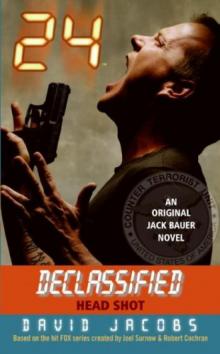 24 Declassified: Head Shot 2d-10
24 Declassified: Head Shot 2d-10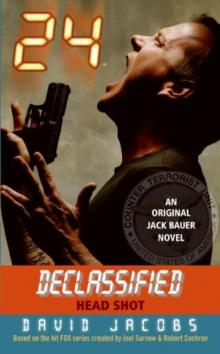 24 Declassified: 10 - Head Shot
24 Declassified: 10 - Head Shot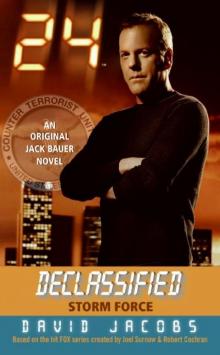 24 Declassified: 07 - Storm Force
24 Declassified: 07 - Storm Force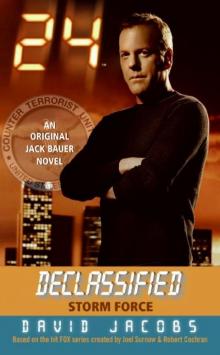 24 Declassified: Storm Force 2d-7
24 Declassified: Storm Force 2d-7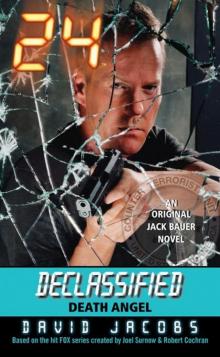 24 Declassified: Death Angel 2d-11
24 Declassified: Death Angel 2d-11